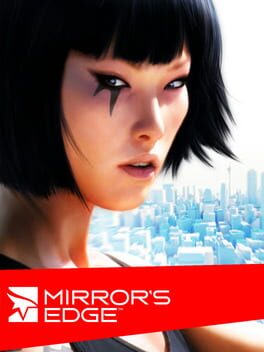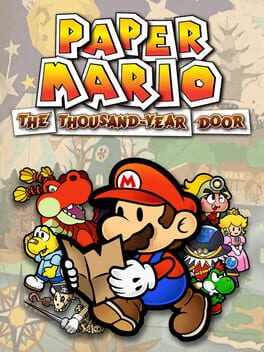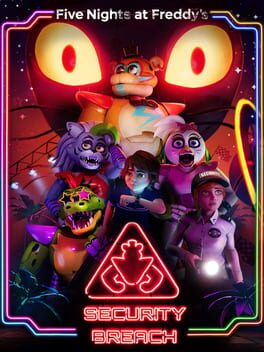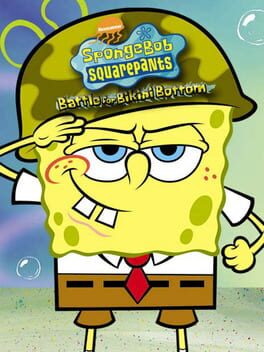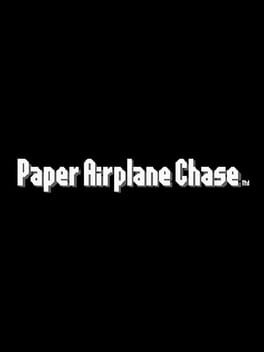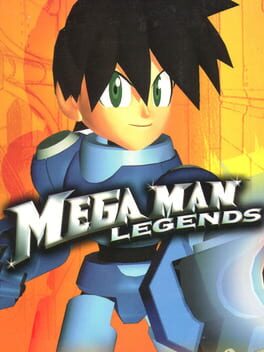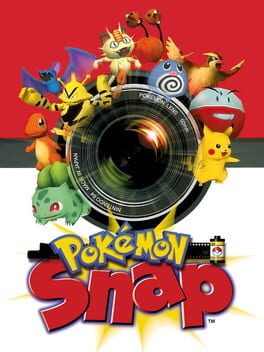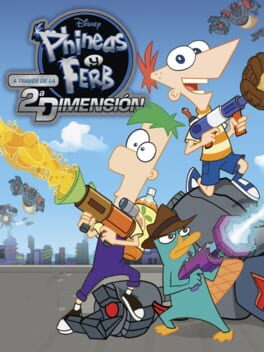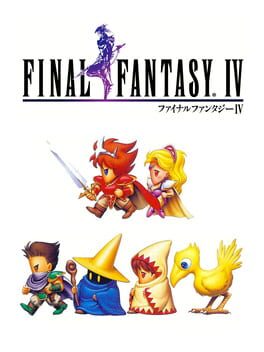nicholasvernacch
16 reviews liked by nicholasvernacch
Mirror's Edge
2008
I can't believe EA came up with something so original!
There is so much I love about this game, and the parkour mechanics are a good place to start. The moveset is intuitive and tight, the controls mostly feel smooth, and the first-person camera manages to viscerally capture the 'feel' of parkour for a couch potato like me to enjoy, alternating between being exhilarating and vertigo-inducing. You also know that a game mechanic is effective when it starts to bleed over into your real-life experiences, and that's what happened here; Faith's instinct and insight on how to get around the environments is represented in-game as various key objects being highlighted in red, and when I went out after a particularly long play session I walked a path I'd walked many times before and noticed some pipes and AC units I'd never paid attention to before.
The aesthetic and character designs are great - I particularly like that Faith is a badass Asian female lead who they didn't sexualize at all, and her design reminds me somewhat of a modern-day Ayame from the Tenchu series (another of my favorite characters). But let's be real here, the best 'character' in the game is the city itself. A dystopia in utopian make-up, with its beautiful skylines and starkly sterile colors (even the plants look more white than green!), with buildings everywhere but seemingly no one in them but cops, the City of Glass takes on a life all of its own. The design of the city parkour sections is incredible, and while there is a key that you can use to point yourself in the direction of your end goal, the level layout does a really good job at subtly directing your eyes towards where you need to go anyway!
This makes it all the more a shame that some aspects of the game just feel 'off', for lack of a better word. The fact that this game was so unique and fresh makes a certain lack of polish inevitable, but I can't pretend it didn't affect my general gameplay experience. For one, certain moves were rather unreliable; wall-running is rather finicky, and there were plenty of sequences in the final act of the game which required near-perfect wallrunning in order to progress. The difficulty curve was all over the place, which I can excuse, but the placement of checkpoints didn't seem very well thought-out. One particular moment stands out to me where I must have died and retried dozens of times: I pressed a button to open a door (which took about 5 seconds to open), walked through the door and was killed within 5 seconds, and was sent back to before the button press, ending up in a very unpleasant loop of playing five seconds and waiting five seconds.
I also feel, given the game's laserlike focus on parkour, that it could have leaned even more into it. Just prior to the final act, the game made a big deal about introducing a new enemy type - a parkour cop that could follow you around the rooftops - and that idea was strangely underutilized in favor of a more action-based final act that mostly took place indoors and shone an unwanted spotlight on the game's gunplay mechanics which are functional but not much more.
As a final point, I wish the game weren't so linear in the paths it sets out for you. There are of course different ways to tackle the various obstacles, and the robust parkous mechanics lend themselves to all kinds of insane speedrun strats. But there are almost no instances of branching paths to get from Point A to Point B, and it really kills the illusion of freedom for me. I'm aware that it's sequel/reboot somewhat botched the transition to open-world, but I would have loved some form of open-world mode in this game because the moment-to-moment gameplay was so good.
The relative failure of the sequel, combined with a seeming lack of spiritual sequels, mean that Mirror's Edge still feels fresh 14 years later, but also means that (AFAIK) we don't have a game that transplants the wonderful spirit of this game into a more refined experience. Mirror's Edge is one of a kind, both for better and for worse.
(PSA! I nearly gave up on this game due to motion sickness at first. If you have the same problem, switch graphic quality to 'low' and remove the reticle - it saved my playthrough and I hope it helps someone!)
There is so much I love about this game, and the parkour mechanics are a good place to start. The moveset is intuitive and tight, the controls mostly feel smooth, and the first-person camera manages to viscerally capture the 'feel' of parkour for a couch potato like me to enjoy, alternating between being exhilarating and vertigo-inducing. You also know that a game mechanic is effective when it starts to bleed over into your real-life experiences, and that's what happened here; Faith's instinct and insight on how to get around the environments is represented in-game as various key objects being highlighted in red, and when I went out after a particularly long play session I walked a path I'd walked many times before and noticed some pipes and AC units I'd never paid attention to before.
The aesthetic and character designs are great - I particularly like that Faith is a badass Asian female lead who they didn't sexualize at all, and her design reminds me somewhat of a modern-day Ayame from the Tenchu series (another of my favorite characters). But let's be real here, the best 'character' in the game is the city itself. A dystopia in utopian make-up, with its beautiful skylines and starkly sterile colors (even the plants look more white than green!), with buildings everywhere but seemingly no one in them but cops, the City of Glass takes on a life all of its own. The design of the city parkour sections is incredible, and while there is a key that you can use to point yourself in the direction of your end goal, the level layout does a really good job at subtly directing your eyes towards where you need to go anyway!
This makes it all the more a shame that some aspects of the game just feel 'off', for lack of a better word. The fact that this game was so unique and fresh makes a certain lack of polish inevitable, but I can't pretend it didn't affect my general gameplay experience. For one, certain moves were rather unreliable; wall-running is rather finicky, and there were plenty of sequences in the final act of the game which required near-perfect wallrunning in order to progress. The difficulty curve was all over the place, which I can excuse, but the placement of checkpoints didn't seem very well thought-out. One particular moment stands out to me where I must have died and retried dozens of times: I pressed a button to open a door (which took about 5 seconds to open), walked through the door and was killed within 5 seconds, and was sent back to before the button press, ending up in a very unpleasant loop of playing five seconds and waiting five seconds.
I also feel, given the game's laserlike focus on parkour, that it could have leaned even more into it. Just prior to the final act, the game made a big deal about introducing a new enemy type - a parkour cop that could follow you around the rooftops - and that idea was strangely underutilized in favor of a more action-based final act that mostly took place indoors and shone an unwanted spotlight on the game's gunplay mechanics which are functional but not much more.
As a final point, I wish the game weren't so linear in the paths it sets out for you. There are of course different ways to tackle the various obstacles, and the robust parkous mechanics lend themselves to all kinds of insane speedrun strats. But there are almost no instances of branching paths to get from Point A to Point B, and it really kills the illusion of freedom for me. I'm aware that it's sequel/reboot somewhat botched the transition to open-world, but I would have loved some form of open-world mode in this game because the moment-to-moment gameplay was so good.
The relative failure of the sequel, combined with a seeming lack of spiritual sequels, mean that Mirror's Edge still feels fresh 14 years later, but also means that (AFAIK) we don't have a game that transplants the wonderful spirit of this game into a more refined experience. Mirror's Edge is one of a kind, both for better and for worse.
(PSA! I nearly gave up on this game due to motion sickness at first. If you have the same problem, switch graphic quality to 'low' and remove the reticle - it saved my playthrough and I hope it helps someone!)
let's lay it all flat: paper mario: the thousand year door has much less interesting level design and enemy variation than its predecessor on the n64. while paper mario 64 goes all in on a diorama aesthetic, ttyd's stylistic choice is the stage, the drama, the theater, and the long rectangular hallway design that reflects such, as if it's all continuously moving before a curious audience. i appreciate this, but much less so do i when backtracking is so prevalent--it's like the worst aspects of shy guy's toybox and flower fields back for round 2. and let's be clear--i'm not complaining about the backtracking in, say, chapter 4, because your circumstances differ (almost) every journey. but it's that last backtracking, and it's the backtracking in chapter 2, and it's the monumental one all done for a piss-take towards the end, and it's everything else--it's cruel and stupid, a transparent attempt at lengthening out the game. and with the enemy designs, it's disappointing to face so many recolors when even paper mario 64 was able to pull out some unique final creatures to spar with in its finale.
and on one more negative comparative point: ttyd is so fucking easy. like, leaps and bounds easier on the player than paper mario 64 is, although i hesitate to describe whether or not this is a legitimate problem. why? well, a lot of the ease of access to ttyd comes in the form of skillbased timing--press well and defend against attacks, but press perfectly and you'll completely negate damage. that much is all on the player and an interesting way of forgoing standard jrpg grinding. but then there's just general cheese, like power punches and charges and multibonks. and then there's fucking danger mario, although that's hilarious so whatever.
... lots of negatives, right? and yet, 5 stars. paper mario: the thousand year door is one of the few examples i can point to where a game's writing and aesthetic can more than make up for its faults, where the story progresses with a great flow and rhythm, complemented by well spoken characters not content to stay in the background like mario's 64 bit partners. the game's easily my biggest writing inspiration: when characters speak, i pay attention because it's always funny or interesting. when the plot develops, it does so with simple, tangible consequences and causes and effects. when new chapters start, there's such an indescribable amount of excitement that wells up within wanting to know just what could be in store next... and how can it disappoint when locations vary from wrestling goons at an arena in a bid to win the champion belt or leading a revolution within a massive tree against its invading occupants or solving agatha christie novels aboard a train in a doubling down of shiver city from paper mario 64?
that last bit is important, because something i've noticed between replays of these two initial paper stories is a series of parallels: thousand year door does so much of what 64 does, but grander. both games see mario sailing to an island, but one has it off the back of a whale you briefly meet before while the other has you paired up with a crew you've assembled, then besieged by ancient spirits and shipwrecked onto what is ostensibly deserted. both games see peach baking an item, but while 64's is a cake, ttyd's is an invisibility potion to help her infiltrate the head office of the head goon of the head terrorists, dude. they both have trains and trainrides, murder mysteries and penguins, a goomba who'll prattle off about every npc and location in the game... but ttyd does it better.
aesthetic's incredibly unique, too, and also a big inspiration on myself. while 64 could best be described as a binary tool heaven a la mspaint, ttyd is the now defunct macromedia flash 8, every character a saturated in color motion tweened black outlined standout. combat felt stiff in 64, but ttyd contrasts such with the smoothest you could ever anticipate. and the designs! 64 has a goomba with... a hat. and a koopa with... a scarf. and a bobbomb that's... pink with angel wings. exciting. thousand year door has a goombella decked out in archeological gear, a koopa covered in bandaids and casual wear, and a sea-salty bombomb donning an admiral cap. pretty fucking stark.
also the music fucks an insane amount.
no need to worry about spoilers, but goodness, ttyd concludes so satisfyingly. it's a story you can tell was thought out right from the start, and the way it reflects all your journey up to its ending... yeah, that's ttyd for you. a game with something to prove, a sequel that wanted to not only build off the foundation of its predecessor but carve out an entire world for itself. that's ttyd for you. oh, but also, some villains should never be forgiven, you know. not everyone changes. anyway...
and on one more negative comparative point: ttyd is so fucking easy. like, leaps and bounds easier on the player than paper mario 64 is, although i hesitate to describe whether or not this is a legitimate problem. why? well, a lot of the ease of access to ttyd comes in the form of skillbased timing--press well and defend against attacks, but press perfectly and you'll completely negate damage. that much is all on the player and an interesting way of forgoing standard jrpg grinding. but then there's just general cheese, like power punches and charges and multibonks. and then there's fucking danger mario, although that's hilarious so whatever.
... lots of negatives, right? and yet, 5 stars. paper mario: the thousand year door is one of the few examples i can point to where a game's writing and aesthetic can more than make up for its faults, where the story progresses with a great flow and rhythm, complemented by well spoken characters not content to stay in the background like mario's 64 bit partners. the game's easily my biggest writing inspiration: when characters speak, i pay attention because it's always funny or interesting. when the plot develops, it does so with simple, tangible consequences and causes and effects. when new chapters start, there's such an indescribable amount of excitement that wells up within wanting to know just what could be in store next... and how can it disappoint when locations vary from wrestling goons at an arena in a bid to win the champion belt or leading a revolution within a massive tree against its invading occupants or solving agatha christie novels aboard a train in a doubling down of shiver city from paper mario 64?
that last bit is important, because something i've noticed between replays of these two initial paper stories is a series of parallels: thousand year door does so much of what 64 does, but grander. both games see mario sailing to an island, but one has it off the back of a whale you briefly meet before while the other has you paired up with a crew you've assembled, then besieged by ancient spirits and shipwrecked onto what is ostensibly deserted. both games see peach baking an item, but while 64's is a cake, ttyd's is an invisibility potion to help her infiltrate the head office of the head goon of the head terrorists, dude. they both have trains and trainrides, murder mysteries and penguins, a goomba who'll prattle off about every npc and location in the game... but ttyd does it better.
aesthetic's incredibly unique, too, and also a big inspiration on myself. while 64 could best be described as a binary tool heaven a la mspaint, ttyd is the now defunct macromedia flash 8, every character a saturated in color motion tweened black outlined standout. combat felt stiff in 64, but ttyd contrasts such with the smoothest you could ever anticipate. and the designs! 64 has a goomba with... a hat. and a koopa with... a scarf. and a bobbomb that's... pink with angel wings. exciting. thousand year door has a goombella decked out in archeological gear, a koopa covered in bandaids and casual wear, and a sea-salty bombomb donning an admiral cap. pretty fucking stark.
also the music fucks an insane amount.
no need to worry about spoilers, but goodness, ttyd concludes so satisfyingly. it's a story you can tell was thought out right from the start, and the way it reflects all your journey up to its ending... yeah, that's ttyd for you. a game with something to prove, a sequel that wanted to not only build off the foundation of its predecessor but carve out an entire world for itself. that's ttyd for you. oh, but also, some villains should never be forgiven, you know. not everyone changes. anyway...
Fantasy Zone
1986
When I was a really small kid and the youngest in my extended family, I remember crowding into a room with my relatives to watch my cool older cousin play this game for the first time.
"You're a spaceship?!"
"Watch out for the flying caterpillars!"
"Are those big pink things enemies too?"
"Don't crash into the ground!"
"Wait... can you even crash into the ground?"
Then my cousin moved Opa Opa the sentient spaceship towards the ground... and he sprouted little feet and started walking around. The room erupted in laughter. Then we all took turns at the controller - I lasted all of ten seconds, but that was enough. Pandora's Box had been opened and kid-me was now a Gamer with a capital G.
It's definitely awkward to play by modern standards; the slippery controls, large hitbox and lack of mercy invincibility when starting a level or exiting the shop menu are indicative of an era when games as a whole were still figuring these things out. But the aesthetic and soundtrack are definite plus points, and the ability to buy upgrades at shops add a nice little layer of strategy to the gameplay loop (I wish you were able to save weapons for later when you needed them most though). And the very first game I ever played is deserving of at least some nostalgia points!
"You're a spaceship?!"
"Watch out for the flying caterpillars!"
"Are those big pink things enemies too?"
"Don't crash into the ground!"
"Wait... can you even crash into the ground?"
Then my cousin moved Opa Opa the sentient spaceship towards the ground... and he sprouted little feet and started walking around. The room erupted in laughter. Then we all took turns at the controller - I lasted all of ten seconds, but that was enough. Pandora's Box had been opened and kid-me was now a Gamer with a capital G.
It's definitely awkward to play by modern standards; the slippery controls, large hitbox and lack of mercy invincibility when starting a level or exiting the shop menu are indicative of an era when games as a whole were still figuring these things out. But the aesthetic and soundtrack are definite plus points, and the ability to buy upgrades at shops add a nice little layer of strategy to the gameplay loop (I wish you were able to save weapons for later when you needed them most though). And the very first game I ever played is deserving of at least some nostalgia points!
Paper Airplane Chase
2008
Mega Man Legends
1997
I played it a little bit on release and only got around to finishing it over a decade later. First off: as someone who enjoyed the mainline series a lot, I was just a little bit disappointed that a series known for its varied stage designs with all manner of gimmicks had you wandering samey-looking corridors with samey-looking designs in this game.
That said, there was so much charm that I can give it a pass for that. It's amazing how much they were able to imbue a previously established character with his own personality and a fresh mythos. The setting, dialogue and rogues gallery were pitch perfect and made me really love playing this game!
That said, there was so much charm that I can give it a pass for that. It's amazing how much they were able to imbue a previously established character with his own personality and a fresh mythos. The setting, dialogue and rogues gallery were pitch perfect and made me really love playing this game!
Pokémon Snap
1999
---Despite the tedious nature of it, there's still a vigorous debate on what length a game should be. I understand the argument, especially if you value capitalism and think the dollar is almighty. I however don't care how long or short a game is, as long as it uses it's time well. I've played many games throughout the years, and out of all of them Pokemon Snap is one the best short games out there. Really it's a great game no matter what category you put it in. The fusion of excitement, wonder, and strategy is all delivered into this compact package of entertainment software.
-------------------------------------------------------------------------------
---For those unaware, Pokemon Snap is a video game where you play as a photographer who must document all the creatures (called Pokemon) on a remote wild island. How you document these Pokemon is through your primary tool: the camera. Each "course" in the game sees you going through an on-rails adventure, snapping shots of the wild life around you. Once your course is finished, you return to the local researcher, Professor Oak, who will grade your shots and put the best ones in a "Pokemon Report."
-------------------------------------------------------------------------------
---Snap is both a relaxing retreat and an exciting foray. It takes the mechanics of an on-rails first person shooter like House of the Dead, and recontextualizes them into this wonderful game about taking pictures. It's the kind of game that's got so much charm and appeal, that one can't help but complete it in a night, which isn't hard to do. Part of that is due to Snap's execution being water tight. There are no detours, or filler, or even pizzazz. From the start Snap is determined to just put you in the field and start documenting.
-------------------------------------------------------------------------------
---Another aspect of Snap's brevity is the courses themselves. Each course follows a specific theme. Think "beach", "cave", "river." These locations are a bit generic sounding on paper, but in execution they're so layered. Pokemon Snap makes fantastic use of 3D space. There's always going to be something you miss because you were trying to take a picture from a certain angle. These courses practically beg to be combed through by the player in order to experience everything they have to offer.
-------------------------------------------------------------------------------
---The one part of these courses I love the most are the Pokemon themselves. These creatures were already an iconic piece of pop culture by the time Snap was released. Though, Snap enhances the "Gotta Catch em' All" attitude of the franchise by giving these Pokemon personalities through how they interact with the environment, the other Pokemon, and even the player themselves. Having these personalities be based off what was established in the popular Pokemon anime is a genius touch. Each Pokemon in the game feels like an inhabitor in the game's world without having the looped routine nature of their backend logical behaviours poking through, ruining the illusion.
-------------------------------------------------------------------------------
---Another area Pokemon Snap excels at is it's flow and progression. Courses and additional abilities are unlocked by adding more Pokemon types to the Pokemon Report, or by boosting the score Professor Oak gives you with each shot you submit to him. The aforementioned abilities bring some welcome replayability to Snap's courses. For example the apple is great at luring Pokemon closer, or the pester ball which is great for disturbing the Pokemon's normal behaviour. These always come at the right time, and makes the player want to go back and use their newly acquired skills to find newer Pokemon or get better shots.
-------------------------------------------------------------------------------
---With all this praise I should say that I do think Snap has it's issues. For one, I'm sure it's brevity isn't for everyone, and I understand that. One part of the game I'm personally not a fan of is the photo scoring itself. Pokemon Snap's requirements for a good shot is for the Pokemon to be right at the center of the shot composition, with it taking up a good portion of the frame, and in some acceptable "pose". These criteria can be pretty dubiously graded at times, plus with some of the Pokemon always being far in the distance, getting the best shot can feel frustrating. I also thought a particular point in the game where you had to hit a button with a Pokemon could be a bit touchy.
-------------------------------------------------------------------------------
---Overall though I believe Pokemon Snap to be a brilliant game. One that still feels unique and fresh to this day while also being a great afternoon relaxer. It's a game to get lost in, and admire the world it builds up. It's also software that has depth, making for an enjoyable experience even if it does only last for a few hours. It's safe to say Pokemon Snap's cult status is well deserved, so please go ahead and take your shot at this classic video game. - [09/10]
-------------------------------------------------------------------------------
---For those unaware, Pokemon Snap is a video game where you play as a photographer who must document all the creatures (called Pokemon) on a remote wild island. How you document these Pokemon is through your primary tool: the camera. Each "course" in the game sees you going through an on-rails adventure, snapping shots of the wild life around you. Once your course is finished, you return to the local researcher, Professor Oak, who will grade your shots and put the best ones in a "Pokemon Report."
-------------------------------------------------------------------------------
---Snap is both a relaxing retreat and an exciting foray. It takes the mechanics of an on-rails first person shooter like House of the Dead, and recontextualizes them into this wonderful game about taking pictures. It's the kind of game that's got so much charm and appeal, that one can't help but complete it in a night, which isn't hard to do. Part of that is due to Snap's execution being water tight. There are no detours, or filler, or even pizzazz. From the start Snap is determined to just put you in the field and start documenting.
-------------------------------------------------------------------------------
---Another aspect of Snap's brevity is the courses themselves. Each course follows a specific theme. Think "beach", "cave", "river." These locations are a bit generic sounding on paper, but in execution they're so layered. Pokemon Snap makes fantastic use of 3D space. There's always going to be something you miss because you were trying to take a picture from a certain angle. These courses practically beg to be combed through by the player in order to experience everything they have to offer.
-------------------------------------------------------------------------------
---The one part of these courses I love the most are the Pokemon themselves. These creatures were already an iconic piece of pop culture by the time Snap was released. Though, Snap enhances the "Gotta Catch em' All" attitude of the franchise by giving these Pokemon personalities through how they interact with the environment, the other Pokemon, and even the player themselves. Having these personalities be based off what was established in the popular Pokemon anime is a genius touch. Each Pokemon in the game feels like an inhabitor in the game's world without having the looped routine nature of their backend logical behaviours poking through, ruining the illusion.
-------------------------------------------------------------------------------
---Another area Pokemon Snap excels at is it's flow and progression. Courses and additional abilities are unlocked by adding more Pokemon types to the Pokemon Report, or by boosting the score Professor Oak gives you with each shot you submit to him. The aforementioned abilities bring some welcome replayability to Snap's courses. For example the apple is great at luring Pokemon closer, or the pester ball which is great for disturbing the Pokemon's normal behaviour. These always come at the right time, and makes the player want to go back and use their newly acquired skills to find newer Pokemon or get better shots.
-------------------------------------------------------------------------------
---With all this praise I should say that I do think Snap has it's issues. For one, I'm sure it's brevity isn't for everyone, and I understand that. One part of the game I'm personally not a fan of is the photo scoring itself. Pokemon Snap's requirements for a good shot is for the Pokemon to be right at the center of the shot composition, with it taking up a good portion of the frame, and in some acceptable "pose". These criteria can be pretty dubiously graded at times, plus with some of the Pokemon always being far in the distance, getting the best shot can feel frustrating. I also thought a particular point in the game where you had to hit a button with a Pokemon could be a bit touchy.
-------------------------------------------------------------------------------
---Overall though I believe Pokemon Snap to be a brilliant game. One that still feels unique and fresh to this day while also being a great afternoon relaxer. It's a game to get lost in, and admire the world it builds up. It's also software that has depth, making for an enjoyable experience even if it does only last for a few hours. It's safe to say Pokemon Snap's cult status is well deserved, so please go ahead and take your shot at this classic video game. - [09/10]
Final Fantasy IV
1991
I didn't love Final Fantasy 4 as much as 6 and 7, but still found great enjoyment in the story, characters, and the ever-reliable ATB combat system. Maximum inventory limits remain a pain, as does the lack of separation between regular items and key quest items, both issues that would be improved in those later entries. Even so, I still didn't regret my time with this one. I did have to do a little grinding to beat the final boss, but still felt a sense of achievement either way. I'd recommend playing this before some of the later entries, as your mileage may vary with going back to those more frustrating elements.
